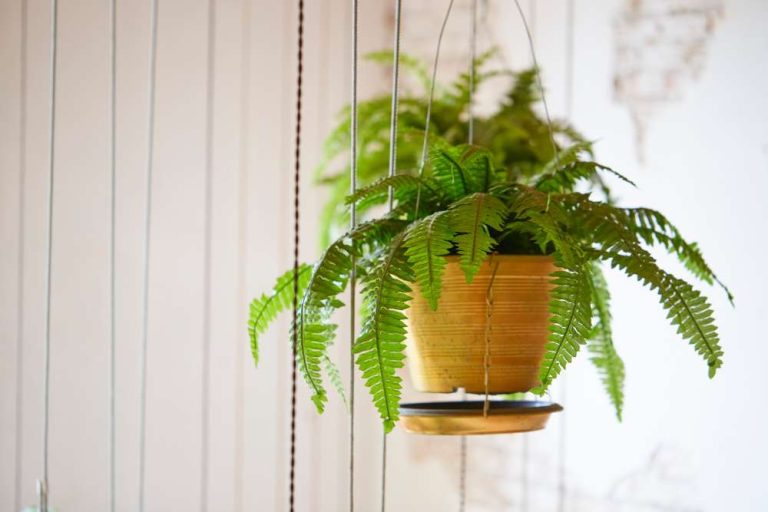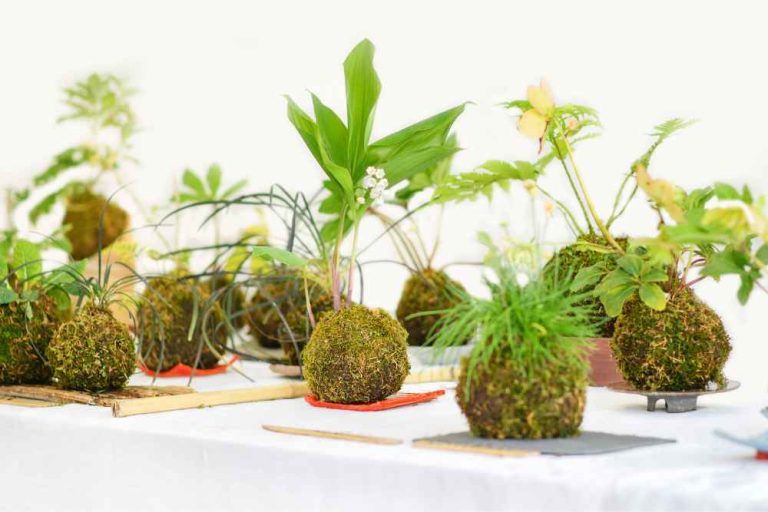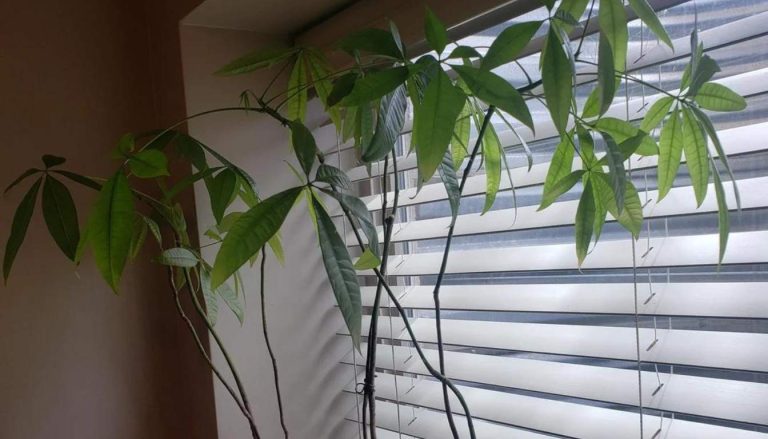How To Propagate Calathea from Cuttings: A Step-by-Step Guide to Growing Your Collection
Calatheas are a popular addition to any houseplant collection due to their beautiful patterns, occasional blooms, non-toxicity to pets, and easy care. Propagating calatheas from cuttings allows you to expand your collection and enjoy the benefits of these stunning plants. In this article, I will guide you through the art of propagating calathea from cuttings, providing step-by-step instructions and essential tips for success.
Key Takeaways:
- Learn how to propagate calathea from cuttings and expand your houseplant collection.
- Calatheas are known for their beautiful patterns and come in a variety of leaf shapes and colors.
- Propagation allows for genetic diversity and the opportunity to develop your gardening skills.
- There are two main methods of propagation: water propagation and soil propagation.
- Timing, soil mix, lighting, and proper care are crucial for successful calathea propagation.
Calatheas: Origins and Variety
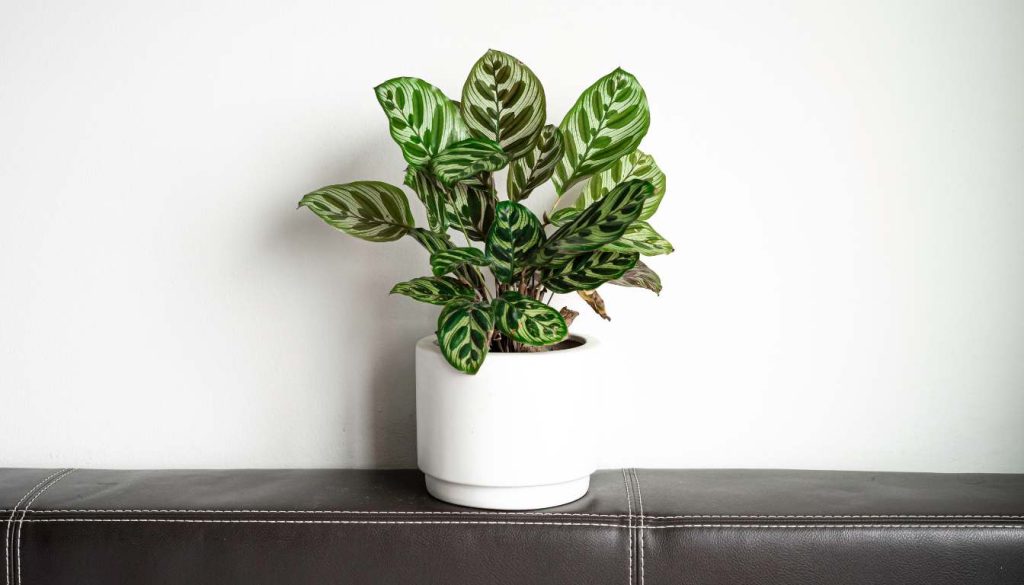
Calatheas, known for their beautiful patterns and vibrant foliage, belong to the Calathea genus within the Marantaceae, or arrowroot family. With over 60 species and numerous cultivars, there is a wide variety of calatheas to choose from, each boasting its own unique characteristics. It’s important to note that some plants previously classified as calatheas are now classified under the Goeppertia genus.
Calatheas, being tropical plants, naturally thrive in the tropical forest canopy. They have evolved to adapt to the changing light conditions and have a fascinating characteristic called nyctinasty. This means that their leaves have the ability to move, allowing them to follow a circadian rhythm.
When it comes to the appearance of calatheas, they offer a striking array of leaf shapes and colors. From the broad and paddle-like leaves of Calathea lancifolia to the slender and elongated leaves of Calathea ornata, there is a calathea variety to suit every plant lover’s taste. The intricate patterns on the leaves, ranging from stripes to spots, add an extra touch of beauty to these already stunning plants.
The Calathea genus
The Calathea genus is part of the Marantaceae, or arrowroot family. These tropical plants are known for their beautiful leaf patterns and movement. With over 60 species and many cultivars, there is a wide variety of calatheas to choose from. Some plants once classified as calatheas are now classified in the Goeppertia genus.
Origins and Variety
Calatheas originate from tropical regions and thrive in the tropical forest canopy. They have adapted to the changing light conditions and have leaves that move, following a circadian rhythm. Calatheas come in a variety of leaf shapes and colors, with intricate patterns adding to their beauty.
Benefits of Propagating Calatheas
Propagating calatheas from cuttings offers a multitude of benefits for plant enthusiasts. Firstly, it allows you to expand your calathea collection and have more of these stunning plants in your home.
Each new plant propagated from a cutting can exhibit unique characteristics, offering an opportunity for genetic diversity in your collection. This adds excitement and variety to your indoor garden, making it even more visually appealing and interesting.
Furthermore, the process of propagating calatheas is a rewarding experience that allows you to develop your gardening skills. It provides a hands-on opportunity to learn about plant propagation, root development, and the growth process.
As you witness new leaves unfurl and roots established, you’ll feel a sense of accomplishment and pride in nurturing new life. Propagating calatheas not only beautifies your space but also deepens your connection with nature.
Another advantage of propagating calatheas is the cost-saving aspect. Purchasing new plants can be expensive, especially if you’re looking to fill your space with a variety of calathea species and cultivars.
You can multiply your plant collection by propagating from cuttings at no additional cost. This is particularly beneficial for those who have a limited budget but a strong desire to surround themselves with the beauty of calatheas. It’s a cost-effective way to grow your collection and enjoy their stunning foliage without breaking the bank.
Unlock the Benefits of Calathea Propagation
Propagating calatheas offers a myriad of advantages, from expanding your collection and nurturing genetic diversity to fostering a deeper connection with nature and saving on costs.
By taking the time to propagate calatheas from cuttings, you’ll not only enrich your indoor garden but also gain valuable knowledge and skills in plant propagation. So why not try it and unlock the benefits of calathea propagation for yourself?
Methods of Propagation: Water and Soil
When it comes to propagating calatheas, there are two main methods you can choose from: water propagation and soil propagation. Each method has its own advantages and considerations, so let’s explore them both.
Water Propagation of Calathea
Water propagation is a simple and effective way to propagate calatheas. To start, take cuttings just below a leaf node and allow them to heal for a few days. Then, place the cuttings in a jar or glass of water, making sure the stem end is submerged.
This method allows you to easily monitor the growth of roots, which typically appear within a few weeks. Remember to change the water regularly to prevent stagnation and the development of mold or bacteria. Once the roots have developed, you can transfer the cuttings to well-draining soil for further growth and care.
Soil Propagation of Calathea
If you prefer a more traditional approach, soil propagation is another great option. Begin by taking cuttings just below a leaf node and allowing them to heal for a few days. Then, plant the cuttings in a well-aerated soil mix, making sure to bury at least 3 or 4 leaf nodes in the soil.
Keep the soil lightly moist and provide the appropriate lighting conditions for optimal growth. With soil propagation, the focus is on establishing healthy root systems within the soil, which will support the growth of new leaves and stems.
Whether you choose water propagation or soil propagation, the key is to provide the right conditions and care for your calathea cuttings. Both methods have their own benefits, so you can choose whichever suits your preferences and available resources. Remember to give your cuttings time and patience, and soon you’ll be rewarded with healthy, beautiful calathea plants.
Steps for Water Propagation
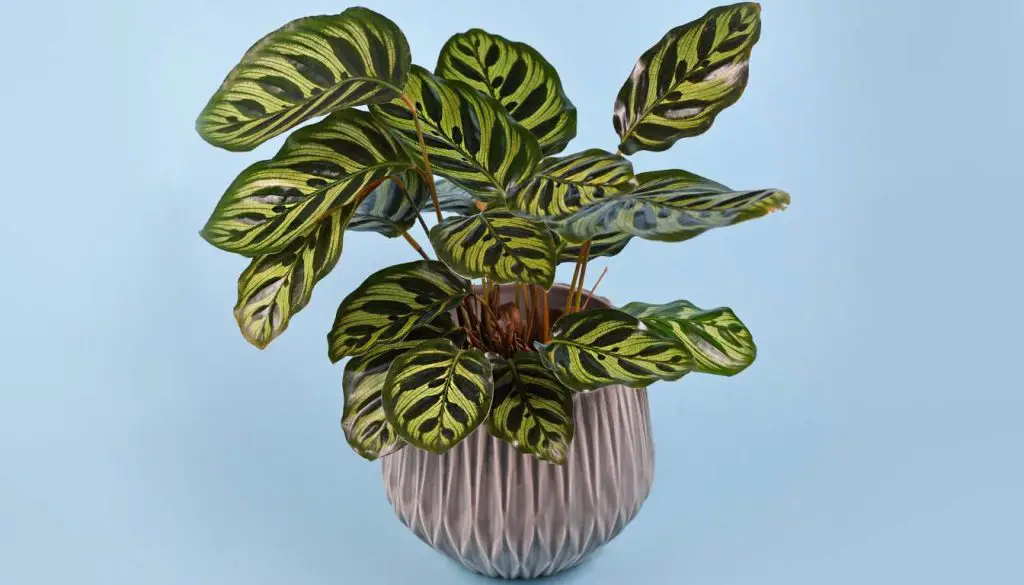
Water propagation is a simple and effective method for propagating calatheas from cuttings. Here are the steps you need to follow:
Step 1: Take cuttings
Start by selecting healthy calathea stems with at least two nodes. Using clean and sharp scissors or shears, make a clean cut just below a leaf node. This is where the roots will form. Remove any lower leaves to prevent them from rotting in the water.
Step 2: Allow cuttings to heal
Before placing the cuttings in water, it is essential to allow them to heal for 1 to 3 days. This healing period allows the cut ends to callus, reducing the risk of rot and increasing the chances of successful root development.
Step 3: Place cuttings in water
Fill a jar or glass with clean, room temperature water. Submerge the stem end of the cuttings in the water, ensuring that at least one leaf node is above the waterline. Place the jar in a warm and well-lit location, but avoid direct sunlight as it can be too harsh for the young cuttings.
Step 4: Monitor and change water regularly
Check the cuttings regularly for root growth. Within a few weeks, you should start to see tiny roots emerging from the submerged nodes. It is important to change the water every few days to prevent stagnation and the growth of mold or bacteria. Fresh water will provide the essential oxygen that the developing roots need.
Once the roots have developed to a suitable size (about 1 inch or longer), it’s time to transfer the cuttings to well-draining soil for further growth. This method allows you to closely monitor the root development and ensures a smooth transition for the young plants. With a little patience and care, you’ll soon have new calathea plants to add to your collection.
Steps for Soil Propagation
Soil propagation is another effective method for propagating calatheas. This process involves a few simple steps that can be easily followed. First, take cuttings just below a leaf node and allow them to heal for 1 to 3 days. This healing period is crucial for the cuttings to form a callus, which will protect them from moisture loss and potential diseases.
Once the cuttings have healed, it’s time to plant them in a well-aerated soil mix. Make sure the soil mix is well-draining to prevent waterlogging, as excessive moisture can lead to root rot. Plant the cuttings in the soil, ensuring that at least 3 or 4 leaf nodes are buried in the soil. This will provide the necessary support and nutrients for the cuttings to develop roots.
After planting, keep the soil lightly moist by watering it regularly. However, be careful not to overwater, as calatheas are prone to root rot if the soil remains consistently wet. It’s also important to provide the right lighting conditions for optimal growth. Calatheas prefer bright, indirect light, so place the newly planted cuttings in a location where they can receive filtered sunlight or artificial light.
“Soil propagation of calatheas involves simple steps like healing the cuttings, planting them in a well-draining soil mix, and providing the right lighting conditions. It’s essential to keep the soil moist but not overly wet, as calatheas are susceptible to root rot.”
Summing it up
To summarize, soil propagation of calatheas is a straightforward process that can be done by following these steps:
- Take cuttings below a leaf node and allow them to heal for 1 to 3 days.
- Plant the cuttings in a well-draining soil mix, burying at least 3 or 4 leaf nodes in the soil.
- Keep the soil lightly moist, avoiding overwatering.
- Provide bright, indirect light for optimal growth.
Best Time for Propagation
When it comes to propagating calatheas, timing is everything. The best time to propagate these stunning plants is during the spring season when they are actively growing. This is the ideal season as the plants have a higher chance of successful propagation.
During the spring, the calatheas are in their prime condition, ready to produce new growth and develop strong roots. It is important to take advantage of this period to ensure the best chances of success.
Propagating calatheas in the spring allows the cuttings to benefit from the natural growth cycle of the plants. The warmer temperatures and increased sunlight during this season provide optimal conditions for root development and overall plant growth.
Calatheas thrive in a warm and humid environment, making the spring season the perfect time to provide them with the ideal conditions for successful propagation.
It is worth mentioning that while propagation can also be done in the summer and fall, it is important to avoid propagating calatheas during the winter when they are in a resting phase. During the winter months, calatheas tend to slow down their growth, and their energy is focused on maintaining their existing foliage. As a result, propagating during this time may not yield the desired results.
Requirements for Successful Propagation
When it comes to successfully propagating calatheas, there are a few key requirements to keep in mind. Firstly, choosing the right soil mix is crucial. Opt for a well-draining organic succulent and cactus mix or a good potting soil to ensure proper root development and prevent waterlogged conditions. This will help prevent root rot and promote healthy growth.
Another important factor is providing the right amount of light. Calatheas thrive in bright but indirect light, so it’s essential to place them where they can receive filtered sunlight or fluorescent light. Avoid exposing the plants to direct, hot sun, as this can lead to leaf burn and damage.
Proper watering is also vital for successful calathea propagation. Keep the cuttings or divided plants lightly moist, but be careful not to overwater. It’s best to allow the top layer of soil to dry out slightly before watering again. This will help prevent root rot and ensure that the plants get the right amount of moisture they need to thrive.
Tips for Calathea Propagation
“One important tip for successful calathea propagation is to choose the right timing. Spring is the ideal season for propagation, as the plants are actively growing and have a higher chance of successful root development. Avoid propagating during the winter months when the plants are resting.”
“Regular monitoring and care are also important for successful propagation. Keep an eye on the moisture levels of the soil or water, adjusting as needed to ensure proper hydration. Additionally, regularly check for any signs of pests or diseases and take appropriate action to address them.”
Troubleshooting Tips and Common Mistakes
When propagating calatheas from cuttings, it’s important to be aware of common mistakes and troubleshoot any issues that may arise. By avoiding these pitfalls and following some essential tips, you can increase the success rate of your calathea propagation.
“Many beginners make the mistake of using heavy or poorly draining soil for their calathea cuttings,” explains plant expert Dr. Green Thumb. “This can lead to root rot and hinder the growth of new plants. It’s crucial to use a well-draining soil mix, such as a combination of organic succulent and cactus mix or a good potting soil.”
Another common mistake to avoid is exposing your calathea cuttings to direct sunlight. Calatheas thrive in bright, indirect light, but direct, hot sun can scorch their delicate leaves. Find a spot in your home that offers bright, filtered light or consider using a sheer curtain to protect the plants from direct sunlight.
“Overwatering is another common mistake when propagating calatheas,” warns Dr. Green Thumb. “While it’s important to keep the soil lightly moist, overwatering can lead to root rot and other issues. Make sure to let the top inch of soil dry out before watering again.”
Lastly, timing plays a crucial role in successful calathea propagation. It’s best to propagate your cuttings during the spring season when the plants are actively growing. Avoid propagating during the winter months when calatheas are in their resting phase.
Tips for Successful Calathea Propagation
To increase the chances of successful calathea propagation, consider the following tips:
- Use a well-draining soil mix
- Provide bright, indirect light
- Water the cuttings lightly, ensuring the top inch of soil dries out between waterings
- Choose the right timing for propagation, preferably during the spring season
FAQ
What are the benefits of propagating calatheas from cuttings?
Propagating calatheas allows you to expand your collection, increase genetic diversity, and develop your gardening skills.
What are the two main methods of propagating calatheas?
The two main methods are water propagation and soil propagation.
How do I propagate calatheas in water?
Take cuttings below a leaf node, let them heal, then place them in a jar of water. Monitor for root growth and transfer to soil once roots have developed.
How do I propagate calatheas in soil?
Take cuttings below a leaf node, let them heal, then plant them in well-aerated soil, ensuring multiple leaf nodes are buried. Keep the soil lightly moist and monitor for new growth.
When is the best time to propagate calatheas?
The best time is during the spring when the plants are actively growing. Avoid propagating in winter when the plants are resting.
What are the requirements for successful calathea propagation?
Use well-draining soil, provide bright but indirect light, keep the cuttings moist without overwatering, and choose the right timing for propagation.
What are common mistakes to avoid in calathea propagation?
Avoid using heavy or poorly draining soil, exposing the plant to direct sunlight, overwatering the cuttings, and propagating during winter.
How can I troubleshoot issues in calathea propagation?
Regularly check moisture levels, ensure proper drainage, and provide the right amount of light for the calatheas.
What are the benefits of propagating calatheas from cuttings?
Propagating calatheas allows you to expand your collection, increase genetic diversity, and develop your gardening skills.
- 29 Bucket Gardening Ideas for a Lush, Compact Garden - October 30, 2024
- 20+ Chic Boho Bedroom Ideas for a Cozy and Stylish Retreat - June 20, 2024
- 12+ Modern Boho Living Room Ideas to Create a Unique Oasis - June 10, 2024

